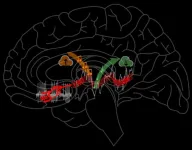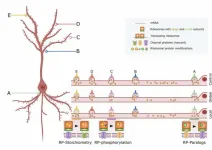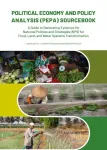Seamlessly multiplexing memory storage and recall
2023-10-10
(Press-News.org)
Every day we store memories, some of which we are able to recall later. But while we do so, do we keep on storing? Yes! We cannot afford to stop memory formation while we are retrieving prior ones. Imagine, for instance, that you are navigating the city while recalling last night’s events to a friend tagging along. Your brain must memorize aspects of the route even while you are in the story, so that you can find your way back later or reach your next destination.
We seem to perform this task without much conscious effort. Big deal, one could say, as we know that the brain has trillions of synaptic connections, so parallel processing is the norm of how the brain operates. It is, however, somewhat less simple in this case, as overlapping brain structures are required for efficient memory storage and recall. The brain actually employs smart ‘process handling’: it rapidly switches back and forth between encoding and retrieval, about 8-10 times per second.
This rapid switching is reflected in an 8-10 cycles per second brain wave in the ‘CA1’ region of the hippocampus, an integral part of the memory circuit. This brain wave is called the theta oscillation, and according to the prevailing theory, memory storage dominantly happens around the peak of the theta cycles, whereas recall is locked to theta valleys (or troughs). It is already known that the CA1 region communicates with different brain areas during these distinct phases of each theta cycle: it receives sensory information during the peaks from a region called the entorhinal cortex, and processes information routed through another region of the hippocampus called CA3 during the theta valleys.
How the CA1 always knows which area to coordinate with, so that storage and recall do not interfere with one another, is not fully understood. In a new study published today in Nature Communications, a team of neuroscientists led by Principal Investigator Balazs Hangya MD PhD at the Institute of Experimental Medicine, Budapest, Hungary, found that a brain area in the center of the forebrain, known as the medial septum, plays a key role in this encoding and retrieval process.
Hangya’s group teamed up with Viktor Varga from the same institute and recorded the activity of medial septal neurons in mice while they went about their daily business. Memory storage and recall is accompanied by even faster brain waves, known as gamma oscillations that are embedded in the ongoing theta rhythm: faster for storing and slower for recall. The researchers found that neurons of the medial septum can align their activity to both fast and slow gamma rhythms, suggesting that they participate in generating these waves. Moreover, small changes in medial septal activity were followed by corresponding changes in CA1 gamma rhythms by a few milliseconds, suggesting that the medial septum plays the leading role in controlling gamma waves, and therefore supports the seemingly effortless cycling of encoding and retrieval.
Through what pathways does the medial septum influence information processing in CA1? While there is a direct connection between these two areas, given the complexity of memory processes, other areas are also likely to be involved. To address this, Hangya’s group teamed up with the laboratories of Tim Viney and David Dupret from the University of Oxford and used recordings of single medial septal neurons with known anatomical targets. This revealed two main pathways by which the medial septum influences gamma waves in the CA1 area: faster gamma waves important in memory storage are controlled through the entorhinal cortex, while slower gamma waves implicated in memory recall are influenced via the CA3 area. “However, the brain was not designed according to engineering logic and the data show it is very likely that other direct and indirect pathways also play important roles”, Hangya remarks. “At the same time, the network also performs impressively well even from a technical standpoint, owing to the well-composed septal activity that ensures precise timing over a wide range of timescales” adds Bálint Király, first author of the study.
Most of our knowledge on the brain comes from observing its complex activities, but how it reacts to direct manipulations can also be very revealing. A relatively novel tool, optogenetics, allows activation or silencing of specific groups of neurons by shining light on these subpopulations. Hangya’s team tested whether optogenetic activation of certain medial septal neurons, in a pattern that mimics natural brain activity, can evoke the expected gamma rhythms in CA1. Indeed, they found reliable and robust occurrence of these gamma waves upon medial septal stimulation, confirming that the medial septum plays a hitherto overlooked role of effectively pacing these rhythms. “Understanding how memory works in the brain is our biggest hope when aspiring to tackle memory diseases, such as dementia”, Hangya concludes.
END
[Attachments] See images for this press release:


ELSE PRESS RELEASES FROM THIS DATE:
2023-10-10
The design concept of a disaster alert balloon, capable of changing its color like a chameleon, has been honored for its design excellence at the internationally renowned International Design Excellence Award (IDEA) 2023.
The awarded concept, named SAFEUP, serves as a hazard indicator, providing visual information about the condition of accident sites from a safe distance. Developed by Professor Chajoong Kim and his team in the Department of Design at UNIST, SAFEUP has received the ‘IDEA 2023’ Bronze Award in the category of Concepts & Speculative Design. The ...
2023-10-10
A group of ribosomal protein genes connect animal models of depression to human patients with major depressive disorder. In order to research depression treatments, scientists use a mouse model, inducing a state with similarities to depression though exposure to variable, unpredictable, and uncontrolled stressors over days or weeks. But is this state molecularly akin to what humans with major depressive disorder experience? To find out, Xiaolu Zhang, Mahmoud Ali Eladawi, and colleagues examine transcriptomics data from postmortem human brain tissue and from several mouse models of stress, seeking to pinpoint conserved ...
2023-10-10
Positron, the antiparticle of electron, has the same mass and charge as that of an electron but with the sign flipped for the charge. It is an attractive particle for scientists because the use of positrons has led to important insights and developments in the fields of elementary particle physics, atomic physics, materials science, astrophysics, and medicine. For instance, positrons are known to be components of antimatter. They are also powerful in detecting lattice defects in solids and semiconductors and in structural analysis of the topmost surface of crystals. Positronic compounds, namely ...
2023-10-10
First study to determine the role pre-pregnancy obesity plays in future poor heart health
Those with overweight or obese BMI in early pregnancy had a higher risk of developing hypertensive disorders of pregnancy
‘If pre-pregnancy obesity is the culprit or cause of risk, we should be targeting this with interventions’
Pregnancy complications such as preeclampsia and gestational diabetes have recently been associated with a higher risk of developing heart disease later in life. But a new Northwestern Medicine study has found obesity before or during ...
2023-10-10
Having obesity before and during early pregnancy appears to be a strong indicator of risk for developing future cardiovascular disease and was significantly linked with adverse outcomes during pregnancy such as high blood pressure, preeclampsia, and gestational diabetes, according to a study published in Circulation Research that was funded by the National Institutes of Health. Researchers have known obesity is a risk factor for cardiovascular disease and pregnancy complications related to blood pressure. However, they did not know which factors – obesity or the pregnancy complications – played larger roles in influencing a person’s ...
2023-10-10
Increased demand for water due to global population growth, coupled with the increasing frequency of extreme weather events, endangers our water security. Nonetheless, little is known about the relationship of water use by sectors and the occurrence of drought-heatwave events, particularly at the large scale. To unveil this issue, a group of researchers from the Department of Physical Geography from Utrecht University evaluated the responses of sectoral water use during droughts, heatwaves and compound (combined) events at a global scale. The study published in Environmental Research Letters shows that stronger sectoral water use responses are found for heatwaves compared to ...
2023-10-10
A new paper in the Annals of Botany, published by Oxford University Press, reveals that researchers have found unaltered agave plant species cultivated by several early cultures including the Hohokam people, a large Native American group in the Southwest that existed between 300 and 1500 CE.
Agave plants have been of great economic and social importance in the Americas for at least 9,000 years. Before people cultivated corn, agave plants were one of their main carbohydrate sources. Archaeological research indicates the Hohokam increased agricultural potential by building terraces for agave dry farming. Agricultural features such as terraces and rock piles were especially characteristic ...
2023-10-10
October 10, WASHINGTON D.C. – A new tool will help governments customise food and agriculture policies based on country-level circumstances to increase their effectiveness at improving diets, adapting to changing climate and protecting natural resources.
The Political Economy and Policy Analysis (PEPA) Sourcebook is the first to compile dozens of frameworks and approaches for designing food and agriculture policies, such as reforming farm subsidies, water policies, food safety regulations and taxes.
The authors from the Alliance of Bioversity International and the International Center for Tropical Agriculture (CIAT), and the International Food Policy Research Institute ...
2023-10-10
A comprehensive guideline from Osteoporosis Canada aims to help primary care professionals deliver care to optimize skeletal health and prevent fractures in postmenopausal females and males who are age 50 years and older. It is published in CMAJ (Canadian Medical Association Journal) https://www.cmaj.ca/lookup/doi/10.1503/cmaj.221647.
With 25 recommendations and 10 good practice statements, this update to the 2010 guideline contains sections on exercise, nutrition, fracture risk assessment, treatment and more, reflecting advances in risk assessment, and nonpharmacologic and pharmacologic management of osteoporosis.
In ...
2023-10-10
Five years after cannabis legalization in Canada, it appears to be a mixed success, with social justice benefits outweighing health benefits, write authors in a commentary published in CMAJ (Canadian Medical Association Journal) https://www.cmaj.ca/lookup/doi/10.1503/cmaj.230808.
Cannabis use was legalized in Canada in October 2018, with the goal to improve cannabis-related public health and safety, and reduce youth access and illegal activities related to cannabis. There was concern among some health ...
LAST 30 PRESS RELEASES:
[Press-News.org] Seamlessly multiplexing memory storage and recall






